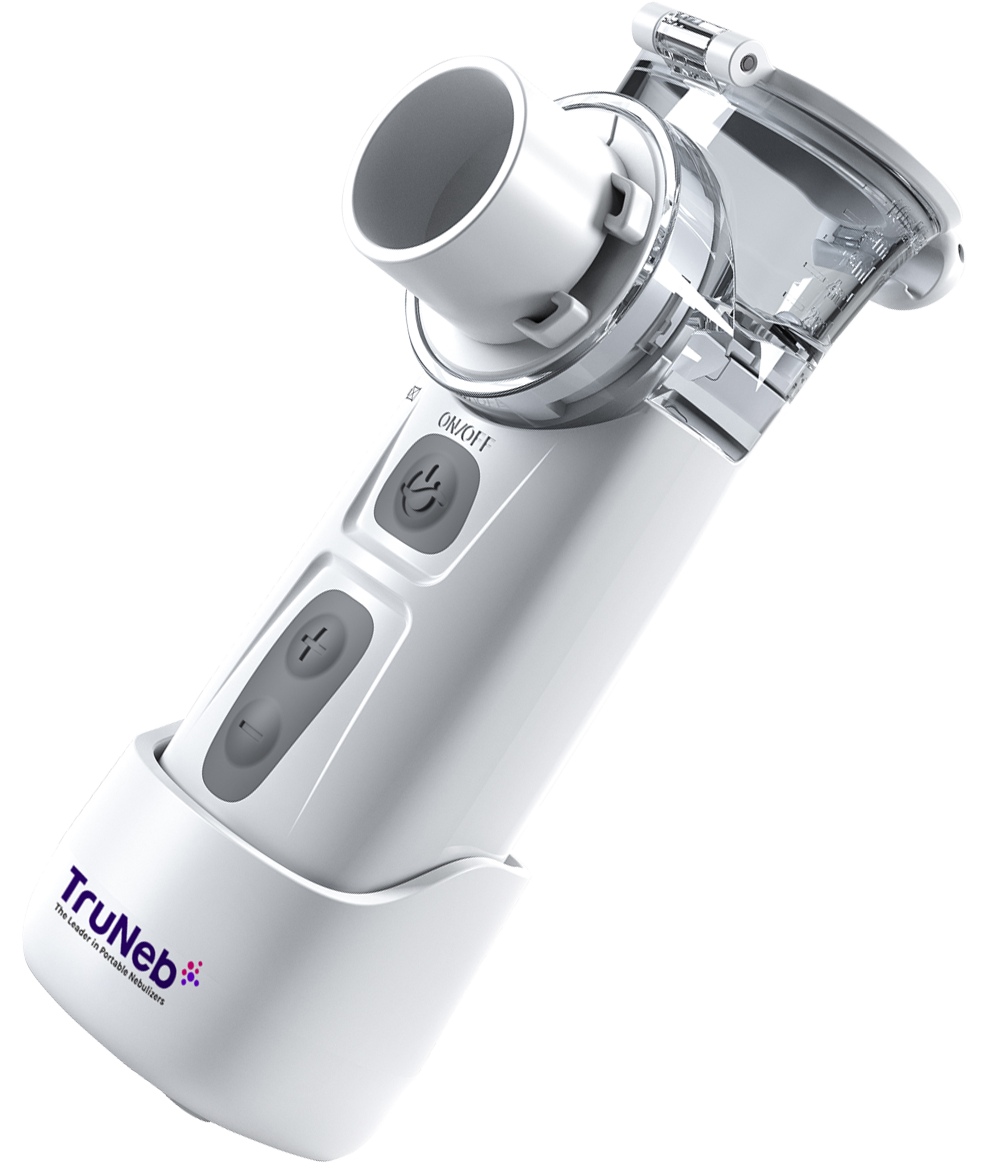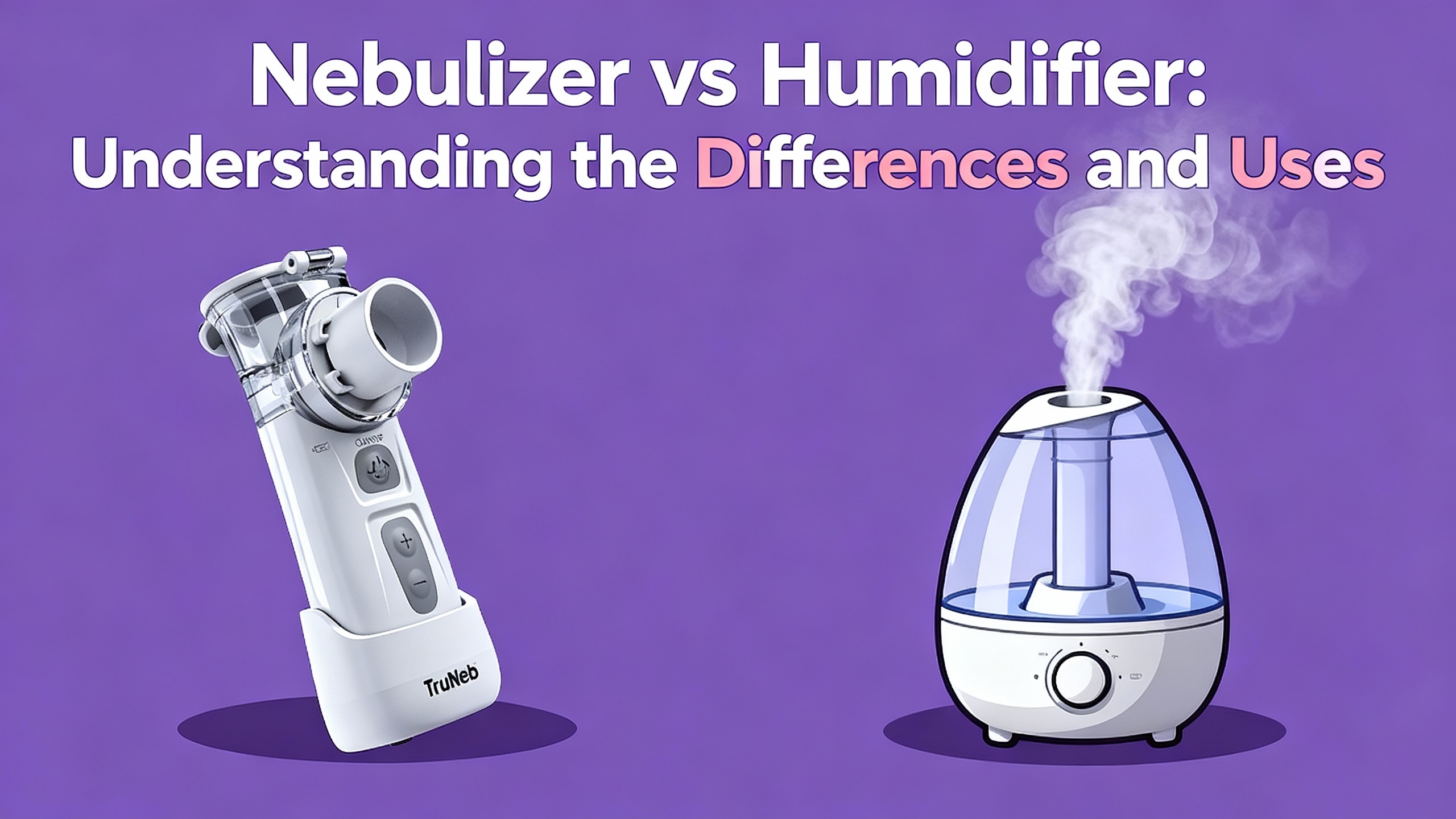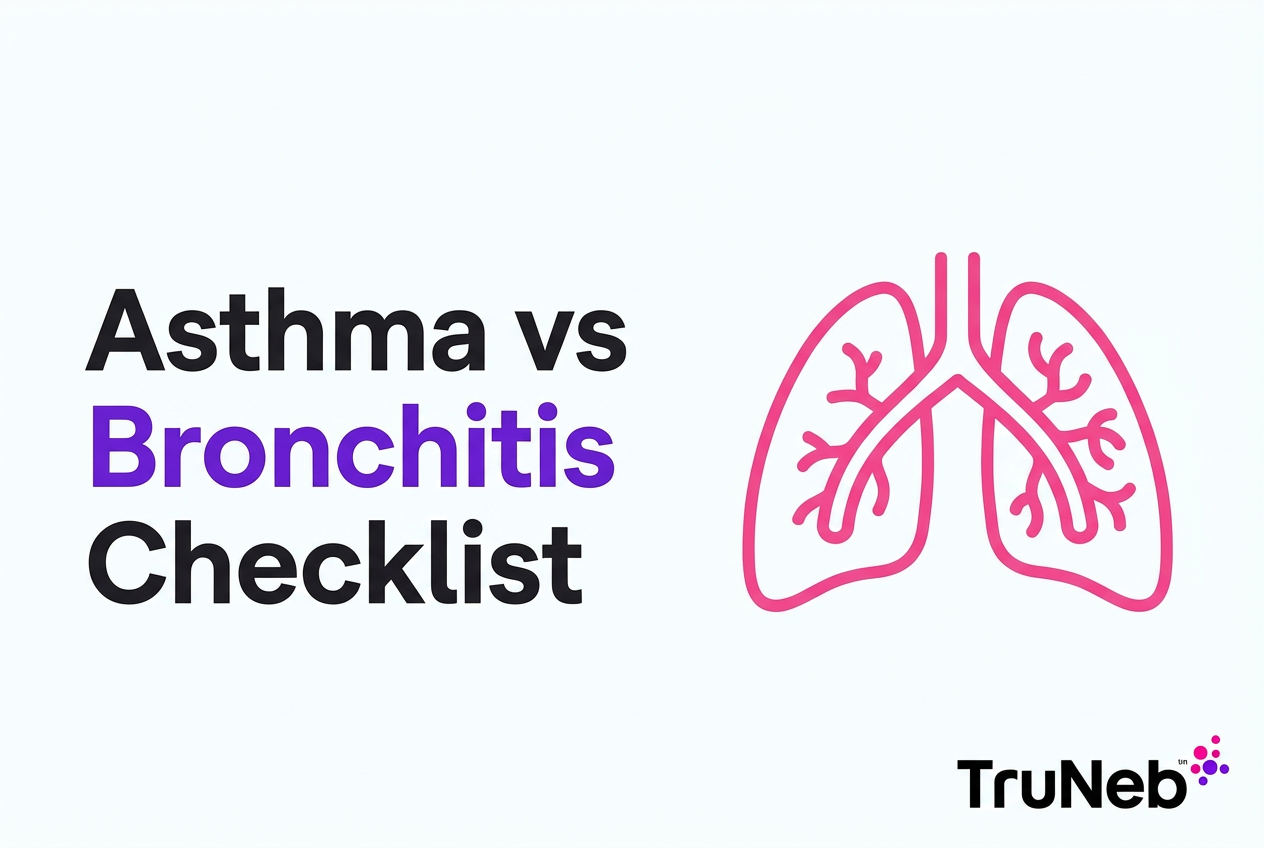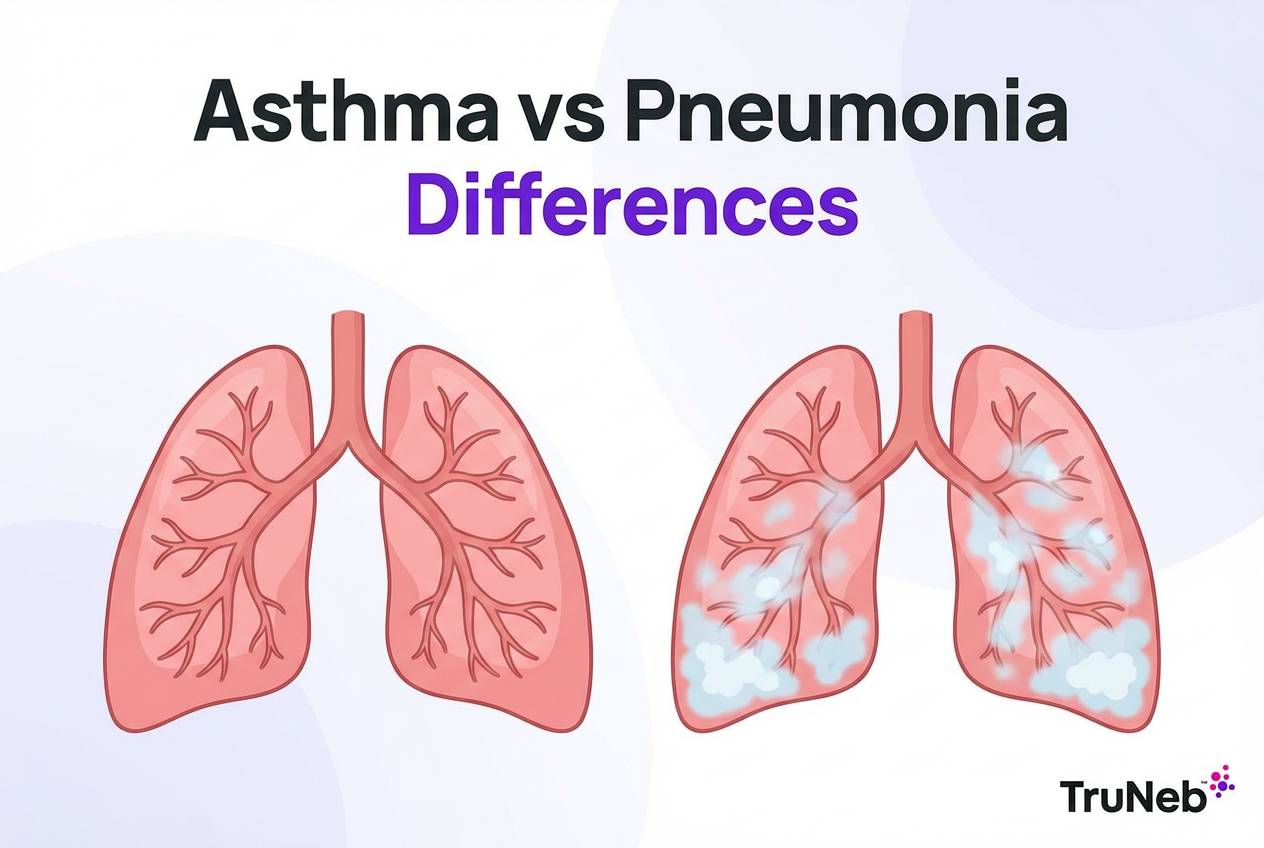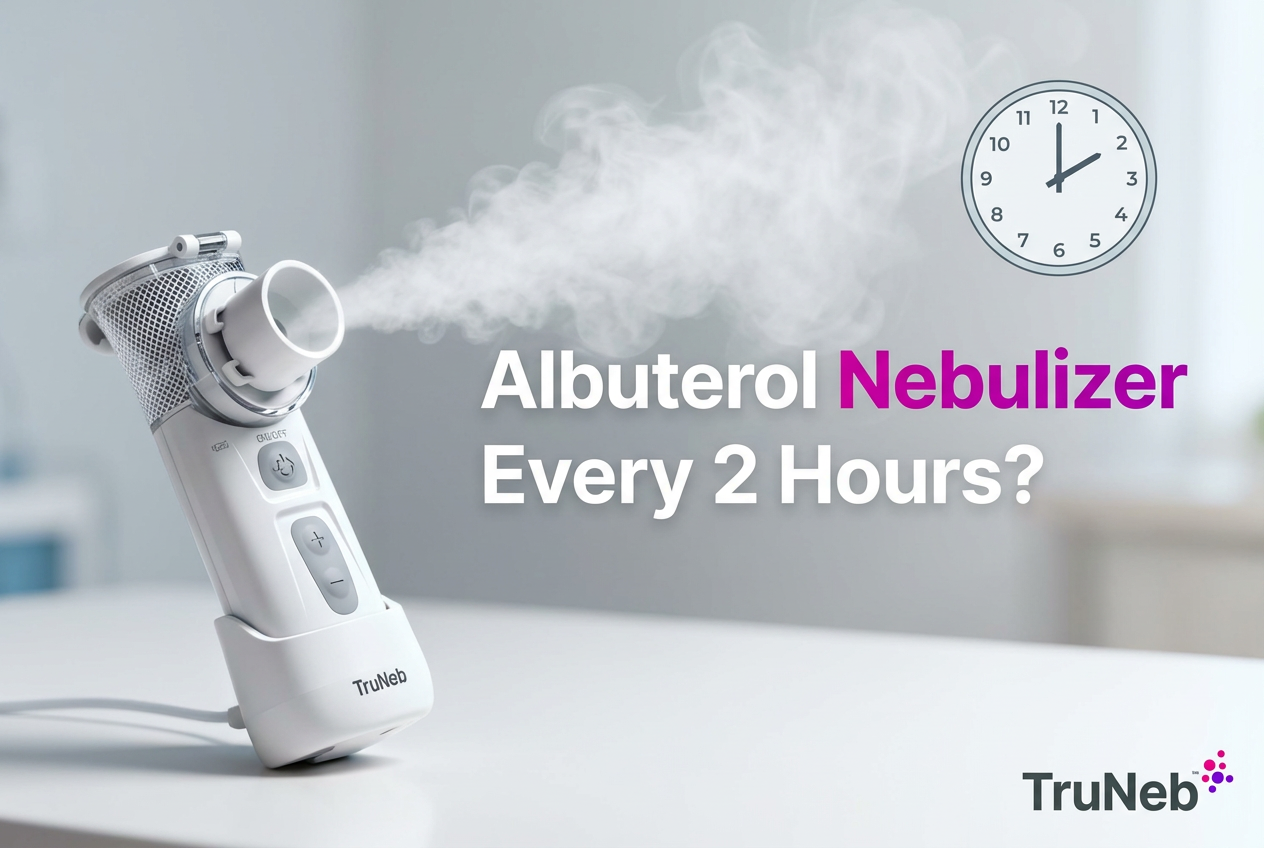On this page
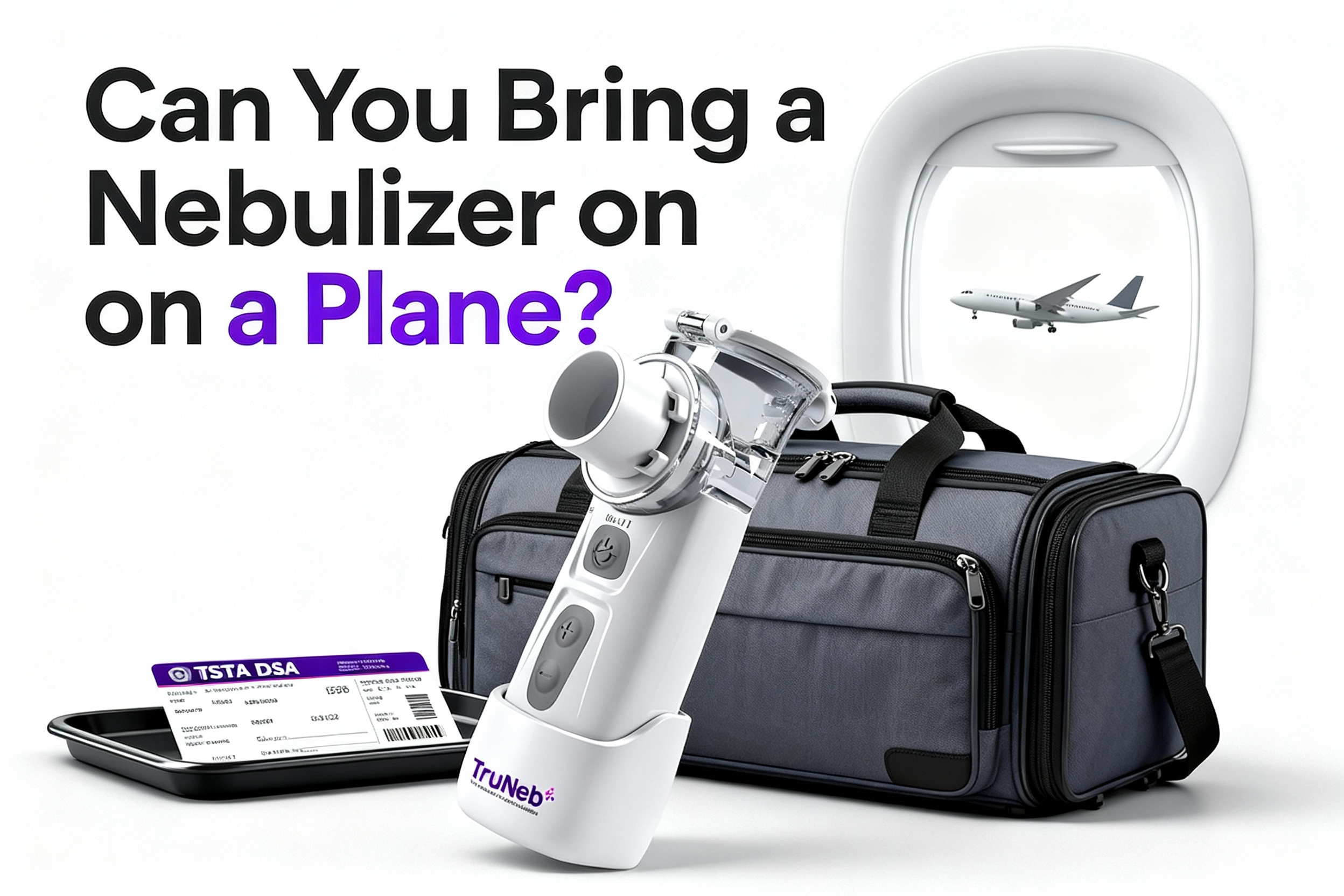
Can You Bring a Nebulizer on a Plane?
Yes, you can. The TSA treats nebulizers as medical devices. They are allowed in carry-on and checked bags. Pack it in your carry-on so it stays with you and won’t get lost or damaged.
Place your nebulizer in a separate bin at security for X-ray screening. Liquid medications for your nebulizer (like albuterol) are exempt from the 3-1-1 liquids rule when they are medically necessary.
One-liner: Nebulizers and their medications are allowed on planes; carry them on, remove the device for screening, and tell TSA you’re carrying medical liquids.
TSA Guidelines: Getting Through Security With a Nebulizer
Here’s what to do at the checkpoint:
- Take your nebulizer out of your bag and place it in a bin, like a laptop.
- Keep masks/tubing together in the case. Officers can swab the device for explosives. It's routine.
- Tell the officer you’re carrying medically necessary liquids. Albuterol medication vials can be over 3.4 oz in reasonable quantities.
- Keep meds in original labels if possible. A simple doctor’s note can help speed things up, especially for international travel.
If you want help at security, use TSA Cares. You can call ahead to request assistance.
One-liner: Place the nebulizer in its own bin, tell TSA you have medical liquids, and expect a quick swab as part of routine screening.
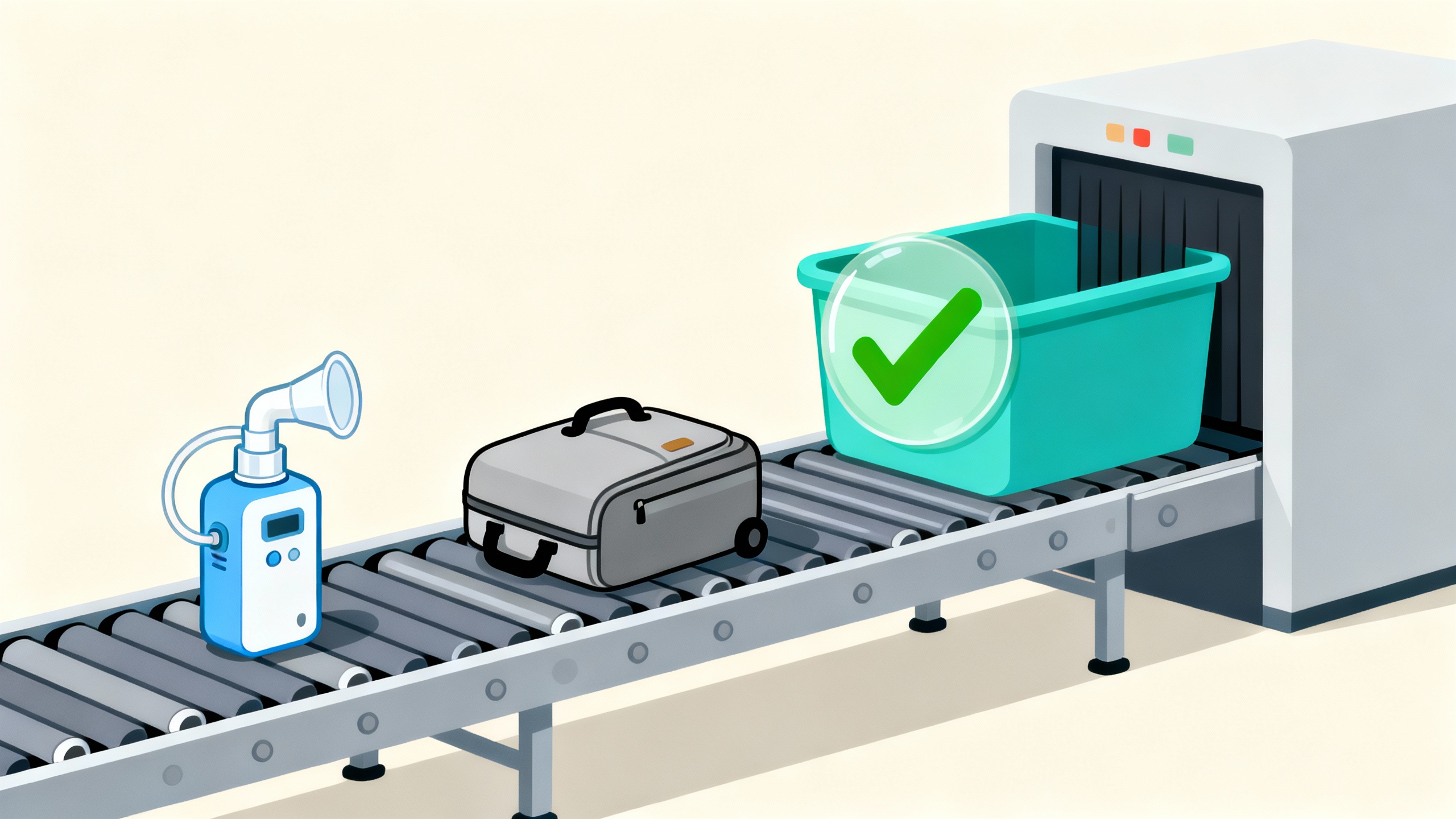
Carry-On vs. Checked: Where Your Nebulizer Should Go
Carry it on. Here’s why:
- You might need it in the airport or on the plane.
- Checked bags can be lost or rough-handled.
- If your nebulizer uses a lithium battery, it must go in carry-on.
Checked is technically allowed for the device itself, but it’s not a good idea for access or safety.
Airlines also typically don’t count necessary medical devices against your carry-on limit. If asked, tell the gate agent it’s medical equipment.
One-liner: Pack your nebulizer in your carry-on so it’s protected, accessible, and compliant with battery rules.
| Item | Carry-on | Checked | Notes |
|---|---|---|---|
| Nebulizer device | Yes (recommended) | Yes (allowed) | Remove for X-ray; may be swabbed |
| Nebulizer meds (e.g., albuterol) | Yes | Yes | Medically necessary liquids—3-1-1 exempt; keep labeled; declare |
| Inhaler | Yes | Yes | Keep within reach |
| Spare lithium batteries | Yes | No | Carry-on only; follow FAA Wh limits |
Note: Lithium-ion batteries ≤100 Wh are allowed in carry-on; 101–160 Wh usually require airline approval. Source: FAA.
Bringing Nebulizer Medications (Albuterol) on the Plane
You can bring your albuterol medication vials and other inhalation solutions in your carry-on. The TSA’s medical liquids exemption lets you carry more than 3.4 oz in reasonable amounts for your trip.
Tips that help:
- Keep meds in original labeled packaging.
- Place them in a small clear bag and tell the officer they are medical.
- Carry a copy of your prescription or a doctor’s note, especially for international flights.
- Don’t put meds in checked baggage. You might need them, and cargo holds can be rough on liquids.
One-liner: Albuterol and other nebulizer solutions are allowed in carry-ons under the medical liquids exemption.
Using a Nebulizer During the Flight (Airline Policies & Tips)
You can use a nebulizer in flight if you need to. Tell a flight attendant before you start so they know what you’re doing and can help if needed. The mist is medication, not smoke.
Power tips:
- Use battery power onboard. Seat outlets aren’t guaranteed for medical devices.
- Bring enough charge. Some airlines ask that medical devices have extra battery time.
- If your unit only plugs in, contact your airline before you fly.
Comfort tips:
- A mouthpiece releases less mist into the cabin than a face mask.
- A window seat can give you a little more space and privacy.
One-liner: In-flight use is typically allowed—inform the crew and use battery power since seat outlets aren’t guaranteed.
Pro Travel Tips for Nebulizer Users
- Use a portable nebulizer. A compact, battery-powered mesh unit is easier on travel days. A portable mesh nebulizer like TruNeb™ can help you take quick treatments in airports or on the plane without hunting for power.
- Pack a complete kit. Keep the device, cup, tubing/mouthpiece, meds, charger, and spare battery together in a padded case labeled “Medical Equipment.”
- Bring extra supplies. Pack more meds than you think you’ll need plus backup parts. Delays happen.
- Carry a doctor’s note. Not required by TSA, but useful overseas or if anyone has questions.
- Know your plugs. If you’ll charge abroad, bring the right adapter.
- Plan your timing. Plan your treatments around flight times if your doctor advises it.
- Use TSA Cares. Call ahead if you want help at security.
- Know the difference. You might see products labeled “steam inhaler” — these are NOT for prescription breathing medications and don’t replace a nebulizer.
One-liner: A small portable mesh nebulizer and a well-packed kit make airport and in-flight treatments simpler.
Frequently Asked Questions
Tap or click a question below to see the answer:
Yes. The TSA allows nebulizers in carry-on and checked bags. Carry it in your carry-on, remove it for X-ray screening, and be prepared for a routine swab.
Generally no. Airlines usually treat necessary medical devices as assistive devices you can bring in addition to your standard carry-on allowance—confirm your airline’s policy.
Yes. Medically necessary liquids are exempt from the 3-1-1 rule. Keep them in labeled packaging, separate them at screening, and tell the officer they are medical.
No. TSA does not require one, but a brief note or a copy of your prescription can help—especially when traveling internationally or carrying larger quantities of medication.
Usually yes. Inform the crew before starting and use battery power since seat outlets aren’t guaranteed for medical devices. If your unit only plugs in, contact your airline in advance.

